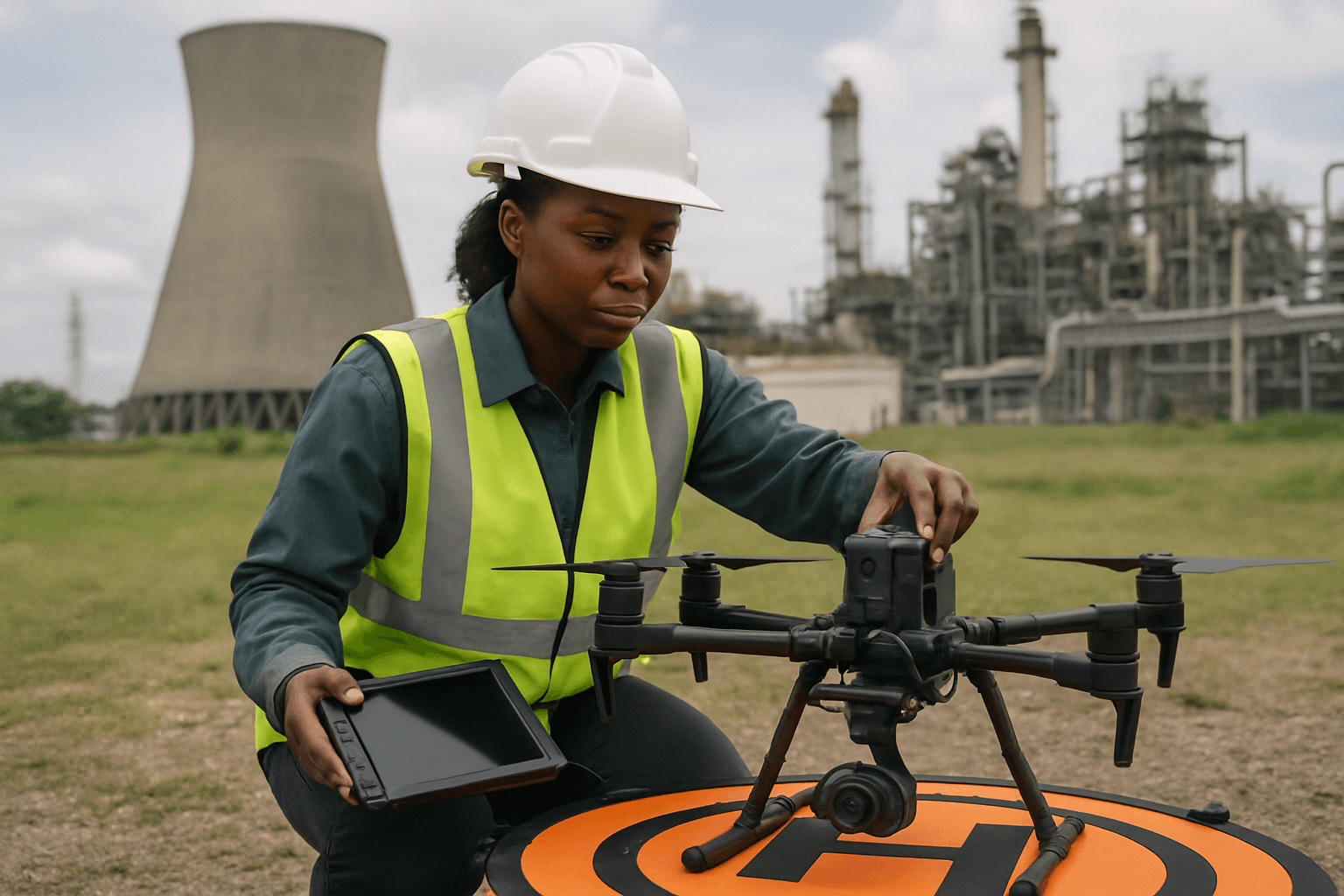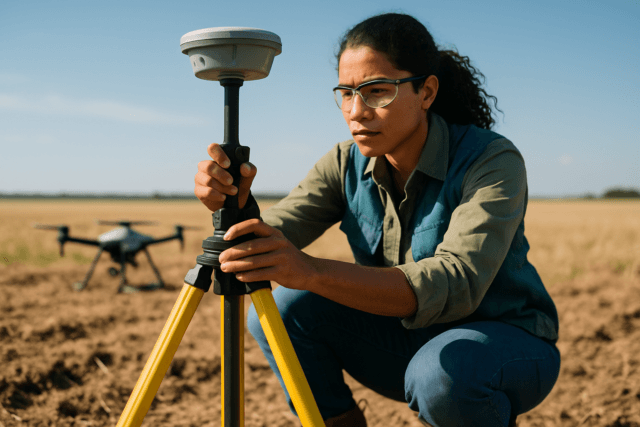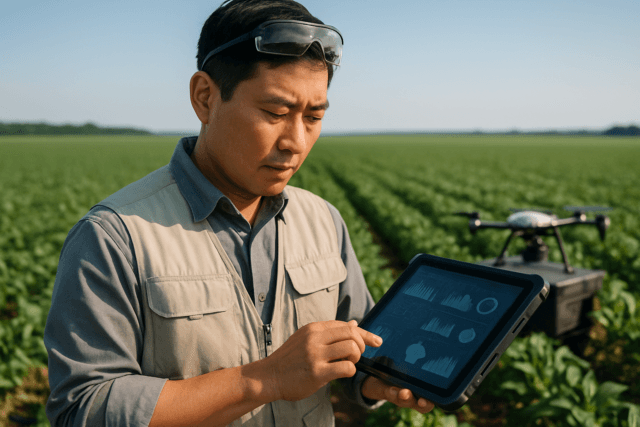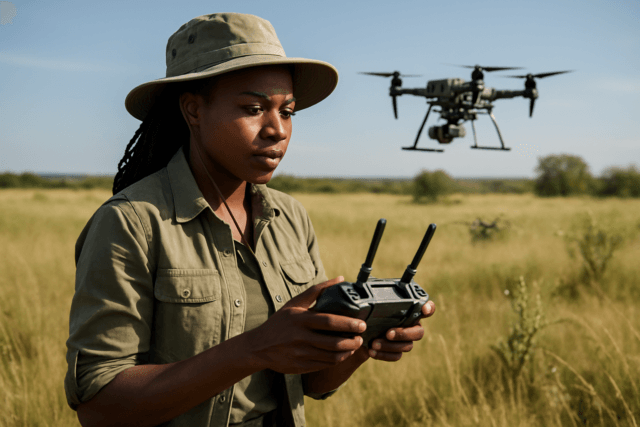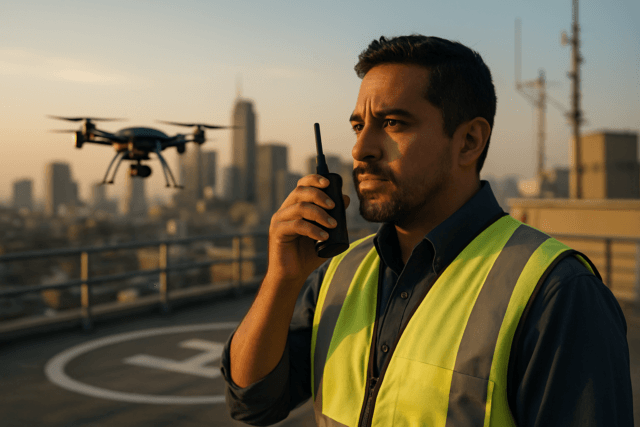Industrial emissions pose a significant threat to global environmental health and human well-being, contributing to air pollution, climate change, and various health issues. Traditional methods of monitoring these emissions often involve manual inspections, fixed-point sensors, or manned aircraft, which can be costly, time-consuming, hazardous, and lack the comprehensive spatial and temporal data needed for effective management. However, a new era of environmental stewardship is emerging, driven by the rapid advancements in drone technology. Unmanned Aerial Vehicles (UAVs), commonly known as drones, are transforming how industries approach emissions monitoring, offering unparalleled efficiency, precision, and safety.
The Imperative for Advanced Emissions Monitoring
Industrial facilities, including factories, power plants, chemical plants, and oil and gas operations, are major contributors to greenhouse gas (GHG) and pollutant emissions. These emissions encompass a range of harmful substances such as carbon dioxide (CO2), methane (CH4), sulfur dioxide (SO2), nitrogen oxides (NOx), volatile organic compounds (VOCs), and particulate matter (PM2.5, PM10). Effective monitoring is crucial not only for environmental protection but also for regulatory compliance, operational efficiency, and public health.
Limitations of Traditional Monitoring Methods
Historically, industrial emission monitoring has relied on methods that present several challenges:
- Ground-based sensors: While providing continuous data at specific points, these sensors often lack the spatial coverage needed to detect fugitive emissions across large or complex industrial sites, missing critical data from drifting plumes or isolated leaks.
- Manual inspections: Sending human personnel into hazardous or hard-to-reach areas like tall smokestacks, offshore platforms, or remote pipelines poses significant safety risks. These inspections are also labor-intensive and can be time-consuming, leading to delayed detection and response to leaks.
- Manned aircraft: While offering broader coverage than ground-based methods, manned aircraft operations are expensive, less flexible for localized inspections, and have their own carbon footprint. Drones, in contrast, offer significantly lower greenhouse gas emissions.
These limitations often result in incomplete data, delayed detection of leaks, increased operational costs, and potential non-compliance with environmental regulations.
Drone Technology: A Game Changer in Environmental Monitoring
Drones have emerged as a pivotal tool, offering a targeted, dynamic, and safer solution for industrial emissions monitoring. Equipped with advanced sensors, UAVs can collect real-time, high-resolution data on greenhouse gas emissions and other pollutants with unprecedented precision and speed. Their mobility allows them to reach areas that are difficult or dangerous for human workers to access, such as remote pipelines, offshore oil rigs, and tall chimneys.
How Drones Monitor Emissions
The core of drone-based emissions monitoring lies in the integration of specialized sensors with UAV platforms. These sensors are designed to detect and measure various pollutants, often providing data in real-time. Drones can be programmed to fly autonomous missions, capturing video footage, inspecting equipment, and collecting data without human interference, streamlining operations and improving efficiency.
Types of Emissions Drones Can Detect
Drones can be equipped with a variety of payloads to detect different types of industrial emissions:
- Greenhouse Gases (GHGs): Methane (CH4) and Carbon Dioxide (CO2) are primary targets. Methane, a potent greenhouse gas, is a significant concern in the oil and gas industry and landfills, and drones can detect even small leaks. Drones with open-path laser absorption spectrometers can measure CO2 and methane levels multiple times per second.
- Air Pollutants: This includes particulate matter (PM2.5, PM10), sulfur dioxide (SO2), nitrogen oxides (NOx), volatile organic compounds (VOCs), and carbon monoxide (CO).
- Hazardous Gases: Drones can identify combustible gases and specific VOCs like benzene, ethanol, ethylbenzene, heptane, hexane, isoprene, methanol, methyl ethyl ketone, MIBK, octane, pentane, 1-pentene, toluene, m-xylene, ethane, butane, propane, and ethylene.
- Radiation: Some specialized drones are also equipped with gamma detection and spectroscopy modules for radiation monitoring in environmental and nuclear safety applications.
Advantages Over Traditional Methods
The shift to drone-based emissions monitoring offers numerous benefits:
- Enhanced Safety: Drones eliminate the need for human inspectors to enter hazardous areas, significantly reducing risks associated with toxic gases, heights, or complex industrial environments.
- Cost-Effectiveness and Efficiency: Drones can cover vast areas and conduct inspections rapidly, drastically cutting down inspection times compared to manual methods. This leads to reduced labor costs, minimizes operational downtime, and allows for quicker responses to issues.
- High Precision and Real-time Data: Advanced sensors provide highly accurate, real-time data, enabling businesses to quickly identify emission sources and take immediate action. This contrasts with traditional methods that may take days or weeks to deliver results.
- Accessibility: Drones can access hard-to-reach or remote locations, such as tall chimneys, flare stacks, pipelines stretching across difficult terrain, and offshore platforms, where traditional methods are impractical or impossible.
- Comprehensive Coverage and 3D Mapping: Unlike fixed sensors that offer localized data, drones provide mobile surveillance over vast areas, enabling the creation of real-time 2D or 3D spatial maps of pollution concentrations and identifying drifting plumes.
- Optimized Resource Usage: By detecting leaks and inefficiencies, drones help industries optimize energy use and reduce waste, contributing to industrial decarbonization goals.
- Environmental Impact Reduction: Using drones instead of vehicles for inspections can lower CO2 emissions, contributing to a greener workflow.
Key Technologies and Sensor Integration
The effectiveness of drone-based emissions monitoring is heavily dependent on the sophisticated sensors they carry. These payloads are designed to detect various gases and pollutants based on their unique physical and chemical properties.
Optical Gas Imaging (OGI) Sensors
OGI cameras utilize infrared (IR) technology to visualize gas emissions that are invisible to the naked eye. These cameras detect thermal energy (heat) and are particularly effective for hydrocarbons, methane, propane, and butane, prevalent in the oil and gas industries. OGI allows for quick visualization of gas plumes and leaks, even from a distance, making it a vital tool for real-time emissions monitoring. Examples include the FLIR G300a OGI camera.
Laser-Based Sensors: Tunable Diode Laser Absorption Spectroscopy (TDLAS)
TDLAS sensors measure gas concentrations by analyzing the absorption of laser light by gases. A tunable laser diode emits precise wavelengths targeted to a specific gas (e.g., methane or CO2). By measuring how much light is absorbed, the TDLAS sensor can pinpoint the gas and calculate its concentration with exceptional accuracy. These systems are highly sensitive, offer fast response times, and are non-invasive, making them ideal for remote sensing in hazardous environments. The AILF U10 is a methane-focused TDLAS sensor compatible with DJI Matrice series drones.
Spectroscopy and Chemical Sensors
- Fourier-Transform Infrared (FTIR) Spectroscopy: This advanced technique provides broadband infrared atmospheric spectroscopy, enabling rapid, quantitative aerial surveys of multiple gas species simultaneously by analyzing their molecular fingerprint region.
- Multispectral Sensors: While often used for vegetation health, multispectral sensors can detect up to 15 different wavebands, including those beyond the visible spectrum. These can be used to identify subtle changes in chemical or structural properties of materials that reflect environmental processes, such as pollution.
- Electrochemical Sensors: These sensors use an array of elements that react chemically with different gases, generating tiny electrical signals. Data analysis identifies the unique “fingerprint” of various gases, allowing for simultaneous monitoring of multiple pollutants like PM, NO2, VOCs, and CH4. The Sniffer4D is an example of a versatile platform using an electrochemical sensor array.
Thermal Imaging
Beyond OGI, general thermal imaging cameras on drones can detect temperature anomalies that signal leaks, structural weaknesses, or potential hazards in pipelines and industrial equipment. Escaping gas or fluid typically alters the temperature around the point of release, allowing UAV thermal cameras to pick up these variations and pinpoint leaks with remarkable accuracy.
Data Processing and Analytics
Once data is collected, specialized software and artificial intelligence (AI) play a crucial role. AI can analyze historical data to predict emission patterns, identify trends, and provide predictive analysis of risks. This integration allows for automated emission reduction strategies and proactive environmental management. Data can be integrated into real-time mapping capabilities, 3D visualizations, and automated reporting systems, providing actionable insights for decision-makers.
Real-World Applications and Case Studies
Drone technology is already making a significant impact across various industrial sectors:
- Oil and Gas Industry: This sector faces immense pressure to reduce methane and GHG emissions. Drones are deployed to inspect pipelines for leaks, monitor offshore platforms for hazardous gas accumulations, and inspect storage tanks for leaks or corrosion. Companies like Shell have implemented drone fleets at over 500 sites for methane leak detection. BP, for example, found that drones can complete inspections in 30 minutes that would traditionally take seven days.
- Chemical Plants: Drones monitor and manage emissions, ensuring compliance with environmental regulations and maintaining air quality standards.
- Power Plants: Drones equipped with gas detectors can monitor emissions from smokestacks, chimneys, and exhaust vents, helping to ensure compliance and identify issues.
- Landfills and Waste Management: Drones are revolutionizing the monitoring of methane and CO2 emissions from landfills, offering faster, safer, and more precise leak detection and emissions mapping.
- Mining: IR spectrometry on drones has been used to assess the environmental impact of former mining sites, determining the grade and extent of soil and surface water pollution and detecting landfills.
- Renewable Energy Projects: Drones improve efficiency by monitoring large solar and wind farms, detecting issues early, and ensuring peak performance, thereby reducing reliance on fuel-based inspection methods and lowering overall emissions.
Regulatory Landscape and Future Outlook
While drone technology offers immense potential, its widespread adoption is also shaped by evolving regulatory frameworks. In the United States, the Federal Aviation Administration (FAA) governs commercial drone operations under Part 107 regulations, which include requirements for remote pilot certification, operational limitations (e.g., visual line of sight, altitude, speed), and environmental reviews under the National Environmental Policy Act (NEPA). Similar regulations exist in other regions, such as those by EASA in the European Union.
The future of drone-based emissions monitoring is bright, with continuous advancements expected in:
- Sensor Technology: Development of even more sensitive, selective, and miniaturized multi-gas sensors.
- AI and Machine Learning: Enhanced algorithms for predictive analysis, automated anomaly detection, and more accurate quantification of emissions.
- Beyond Visual Line of Sight (BVLOS) Operations: Regulatory advancements will allow drones to cover even larger areas and more complex missions autonomously.
- Automated Drone Systems: “Drone-in-a-box” solutions like DJI Dock 2 facilitate automated, scheduled missions, further reducing costs and safety risks.
These advancements will enable industries to achieve increasingly ambitious decarbonization goals, enhance ESG (Environmental, Social, and Governance) reporting, and ensure a cleaner, safer environment.
Challenges and Considerations
Despite the clear advantages, there are challenges that need to be addressed for full implementation:
- Regulatory Hurdles: Restrictions on BVLOS flights, airspace authorizations, and evolving environmental regulations can hinder widespread deployment.
- Battery Life: While improving, battery life can still be a limitation for very long or extensive missions.
- Data Integration and Management: Integrating large volumes of drone-collected data with existing industrial information systems and ensuring robust data analysis can be complex.
- Cost of Initial Investment: While cost-effective in the long run, the initial investment in specialized drones and advanced sensor payloads can be significant.
- Skill and Training: Operating sophisticated gas detection drones requires trained and certified pilots and thermographers.
Conclusion
Drone technology has emerged as a transformative force in monitoring industrial emissions, offering a powerful, precise, and safe alternative to conventional methods. By providing real-time, high-resolution data on a wide array of pollutants, UAVs empower industries to enhance environmental compliance, optimize resource usage, and significantly reduce their carbon footprint. As sensor technology continues to evolve and regulatory frameworks adapt, drones will play an increasingly central role in achieving global climate goals and fostering a more sustainable industrial landscape. Their ability to deliver actionable intelligence from hard-to-reach and hazardous environments positions them as an indispensable tool for environmental stewardship in the 21st century.

